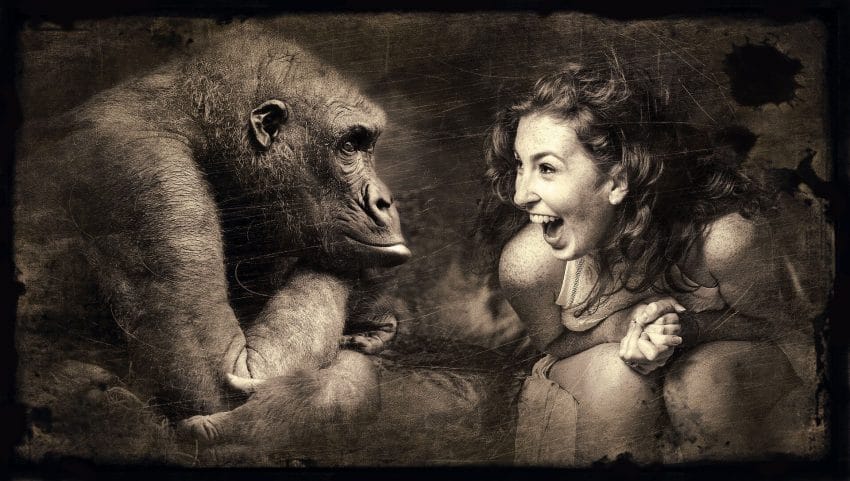What Is Social Change And Why Take It Seriously?
Updated: November 27, 2024

Have you ever wondered, “What is social change?” You’ve probably heard of the term thrown around before, or maybe you even learned about it briefly in school. Social change may have several definitions and it is very complex. Yet, as humans living in this world, understanding social change and how it has played a role in our lives historically, will allow us to spur social change now and in the future.
What Is Social Change And Why Should We Care?
Social change can be defined as the way in which human interactions, relationships, behavior patterns, and cultural norms change over time. These changes ultimately transform cultural and social institutions, concepts, and rules, which will inevitably impact society for the long-haul. These changes and transformations are not necessarily good or bad, but they are profound. On the surface, we may not notice social change; it can take years — even centuries — of action to cause one change.
As students and members of a rapidly changing society, it’s important to look back on social changes of the past and how they’ve influenced us now. For instance, at one point, women were not able to study at university. Today, both men and women, of all races, religions, nationalities, and creeds, can study — even online and tuition-free, like at University of the People. This is why social change is important. Without social change, we cannot progress as a society.
Change Begins From Interactions With Others
Change begins with how and when we interact with others and is usually inspired by ideological, political, and economic movements. Social change usually starts at the bottom and works its way up, first to society on a mass scale, and eventually, lawmakers and people in power.
But, sometimes, it can move from the top down, like when a new leader comes into office. This means that we will have to listen to the opinions of others and have what could be difficult conversations in order to make a change. It’s about listening to another person’s perspective on a given issue, even if you don’t necessarily agree. It’s also about being persistent and fighting for what you believe in, even if it’s not easy.
The Ever-Changing Social Order
Theoretically, the next process in social change is understanding the changing social order, which is one of the broadest ways of looking at social change. It’s important to recognize that while social change is an ongoing phenomenon in society, there are two types of social change: the processes of change within the social structure (which helps to maintain that structure) and processes of change that can modify the structure in its entirety, which is also referred to as “societal change.”
Beyond this, there are other ways to classify social change. Social change may happen on a small scale, but then does not really reach the overall society at large. For instance, there may be changes in a tribal unit, but not within the major government in which that tribe resides. For example, maybe a small village decides to live a more green lifestyle, by collectively recycling plastic and picking up trash, even though the region in which they live may not have any laws that require this or have set any examples.
Social change may also be classified by whether or not it was a change that happened over a short period of time or a longer period of time.
Social change is pretty unique to humans. Due to our biology and ability to adapt, learn, and be flexible — especially as our environment changes around us—we are able to continuously inspire social change, even if we initially cause it. Hence, the changing social order.

Image by Stefan Keller from Pixabay
The History Of Social Change
If social change is human, then technically, it’s been happening since our species has appeared. Humans have adapted and changed throughout the thousands of years we’ve been in existence. If we hadn’t, we’d still be hunter-gatherers.
But, if we want to discuss the history of social change, then we need to look at the first examples, studies, and theories of it. To start, there were the three basic ideas of social change, which were prominent in ancient Greece and Rome:
- The idea of decline or degeneration
- The idea of cyclic change
- The idea of continuous progress
The third one, progress, birthed more philosophical ideas of social change beginning in the 17th century, with “social thinkers” such as Adam Smith, who wrote “Nature and Causes” and the “Wealth of Nations.”
Eventually, this led to other social change theories, like those of social evolution by Herbert Spencer or Charles Darwin. This later led to more complex theories (since social change is ever-present), by people like Karl Marx, which expanded on social change to ideas like communism, socialism, and slavery.
Theories will continue to evolve as humans continue to evolve, and as we’re presented with other issues in our society that will spur a need for another social change.
What Are The Patterns Of Social Change?
Social change is believed to have a pattern to it. From the basic ideas of social change discussed earlier, some believe social change is one-directional (continuous progress), while others believe social change is a cycle (cyclical change). These are the easiest patterns of social change to be explored, as the third basic idea, “decline or degeneration,” can often have biased interpretations that are not scientifically-backed.
Cyclic Change – Mechanisms Of Curvilinear And Cyclic Change
One pattern of social change, cyclic change, says that everything happens in a cycle. For instance, how we calculate time and have the cycle of the seasons, or in business, in which it is believed the economy goes through cycles of economic boom and recession. Some of these cycles are less predictable than others, but they are hard to ignore when studying theories and patterns of social change over thousands of years.
Within this, there are mechanisms of curvilinear and cyclic change, which ultimately states that changes in one cycle can create the conditions for changes in another. These can be broken up into two ideas:
- Saturation – This is when the cycle is “saturated” with too many changes. For example, in business when the market is saturated with too many goods, which pushes rates lower.
- Exhaustion – Eventually, too much saturation can lead to “exhaustion” or “fatigue”, which is when there’s a down-curve. However, over time, the market will need to be built up again, continuing that cycle.
One-Directional Change – Mechanisms Of One-Directional Change
Another pattern of social change is one-directional change, which says that change happens — as it sounds — in one direction. This usually implies a growth or increase of some kind, such as population growth or the growth of a company. But this change could also go in the opposite direction, whereas one factor increases, another decreases.
The mechanisms of one-directional change, which discusses the “cumulative change of human knowledge,” works like this: As we learn new ideas, those ideas replace former ideas and practices with better ones. These mechanisms can be broken down into three parts:
- Accumulation – An cumulative collection of ideas, practices, and thoughts.
- Selection – The process of selecting the best, most effective ideas, once accumulation of that knowledge reaches its limit. This can be done through a trial-and-error process.
- Differentiation – Over time, to take accumulation of ideas beyond, humans would have to specialize and differentiate, or rather “innovate” to deal with new problems as they arise.
Combined Patterns Of Change
Do both cyclic change and one-directional change sound familiar to you? That could be because many experts believe in a combined pattern of change, in which one-directional and cyclic changes can happen at the same time.

Image by StockSnap from Pixabay
Explanations Of Social Change
There’s no questioning the fact that ideas of social change are very complex. Therefore, it can be helpful to break it down into different explanations. Sometimes, explanations of social change cannot be looked at as one. This is because there are different working parts of social change that often seem to come together, but first we need to understand each part on its own.
1. Natural Environment
One explanation of social change is the natural environment. If there is a change in the environment (which can sometimes be caused by humans, like pollution), then this can lead to pandemics, poverty, famine, etc., which can inspire changes in a society to deal with these problems.
2. Demographic Processes
Population growth can be spurred by social changes in place to allow people to grow. This growth can lead to an expansion of society, which can lead to technological innovations, which leads to even more social change. One example of this is the industrial revolution.
However, at the same time, population growth can also lead to negative changes and disparities among populations, as we see in underdeveloped countries today.
3. Technological Innovations
Technological innovations — which can be inspired by population growth as well as a way of dealing with environmental changes or a way to simply demonstrate new ideas — is another explanation of social change. It’s believed to be one of the biggest influences on social change there is. For example, think about how the internet has changed society as we know it.
4. Economic Processes
There have been many theories about how economic processes serve as an explanation of social change, and oftentimes, technological innovations can lead to changes in economics, as well. Throughout history, we’ve had different ways of organizing an economy — for instance, division in labor, currency and trade, property relations, industrialization, and economic systems like capitalism and communism.
5. Social Movements
Social movements are another important example of social change, and one that may be most prevalent in our lives. This usually takes a leader or group of people who are able to inspire change, whether that’s good or bad. For example, Hitler no doubt spurred a social change, as did Martin Luther King, Jr. Today, with technology and social media, nearly anyone can start a movement, and it has helped create changes that much quicker.
6. Political Processes
The way we vote, elect our leaders, create rules and laws, and fight those rules and laws, is an example of social change. This can encompass violence, revolutions, and international relations. Brexit, as well as what led up to it, may be a good recent example of a social change based on political processes.
Examples And Terms Of Social Change
Social change may be a familiar term to some, but there may be other examples and terms of social change that are more familiar to others. These terms may be used interchangeably by various organizations depending on what feels the most relatable to their audience:
- Social change
- Social justice
- Social activism
- Civic engagement
- Civic dialogue
- Community building
- Social capital
- Community development
- Cultural vitality
Is Social Change Hard?
If you think that social change is hard, then you’re right. Humans may engage in social change all the time, but to actually spur true social change for something you believe in is not easy.
That being said, one of the gifts that social change has given us is the internet and the ability to connect with others who share a common goal, while also being able to have discussions with others who may think differently. It takes work and dedication, but it is certainly possible.
Social Change Begins With Us
With education and community, we can have difficult conversations that can lead to social change. It has been done before, and it will happen again. It’s how society has changed not only laws, but cultural norms and expectations, leading to more acceptance and tolerance. Of course, there will always be opponents to different types of social change, no matter how far we come.
Here at University of the People, we believe education is a human right for all. That’s why we’re working towards our own social change by offering a tuition-free model, which is accessible online to anyone around the world.



